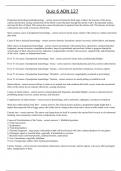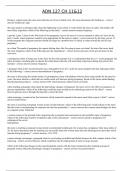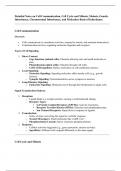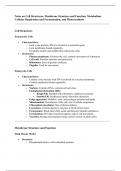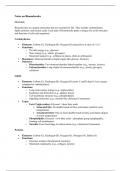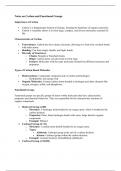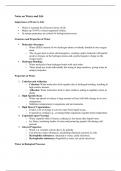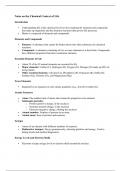Austin Community College
Latest uploads at Austin Community College. Looking for notes at Austin Community College? We have lots of notes, study guides and study notes available for your school.
-
210
-
1
-
5
All courses for Austin Community College
- NR 226 NR 226 1
- NRSG 263 NRSG 263 1
- NRSG 263 Principles of Nursing-Mental Health 1
- NRSG 3302 NRSG3302 1
- NRSG 3302/ NRSG3302 1
- NU 278 1
- NUR 109 NUR 109 (NUR 109) 2
- NUR 2488 1
- NUR 2790 1
- NUR 280 1
- NUR 2868 1
- NURS 3315 1
- NURSING 341 NURSING341 19
- NURSING 341 Med Surg NURSING 341 6
- NURSING 341 vSim Clinical Packet_Kenneth Bronson 2
- NURSING 341 vsim Vernon Watkins 2
- NURSING 341 vsim Vernon Watkins.CONCEPT MAP WORKSHEET NURSING 341 4
- NURSING 341/ NURSING MISC Vernon Watkins trial exam questions with answers 1
- NURSING NUR3430 NURSINGNUR3430 1
- NURSING NURA 1001 NURSINGNURA1001 3
Latest notes & summaries Austin Community College
NURSING NURA 1001 :NURSE AIDE FOR HEALTHCARE ORGANISATIONS EXAM (COMPLETE & VERIFIED ) 100% PASS
Quiz 6 ADN 127 With Complete Solutions Latest upload
ADN 127 CH 11&12 With Complete Solutions Latest upload
cell communication, cell division, genetics and inheritance, and DNA replication.
Describe the cell theory. Describe some factors that limit cell size. Describe the typical prokaryotic cell (e.g. size, plasma membrane, cell wall, cytoplasm, ribosomes, nucleoid and flagella.) Describe the typical eukaryotic cell and explain the structure and function of: nucleus and nucleolus, endomembrane system, ribosomes, mitochondria, plastids, the cytoskeleton and cilia, flagella and centrioles. Compare and contrast the characteristics of prokaryotes, eukaryotes and viruses. Des...
Describe structures and functions of carbohydrates, lipids, proteins and nucleotide based compounds. Describe four levels of protein structure and how they relate to protein activity. Describe the structure of nucleotides. Describe the DNA molecule.
Identify some characteristics of carbon that allow it to play such an important role in the chemistry of life. Describe isomers in biology. Identify functional groups of biological molecules.
Describe properties of water and explain their importance to living systems. Describe the properties of acids, bases, and salts. Define pH. Describe the roles buffers play in living organisms.
Describe the basic structure of atoms. Interpret chemical and structural formulas. Describe ionic and covalent bonds. Describe hydrogen bonds and nonpolar interactions, and their importance for living organisms.
This covers the basics of biology fundamentals including scientific themes, evolution, chemistry for biology, water chemistry and pH, functional groups, and biomolecules.


